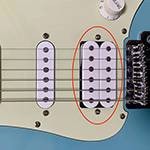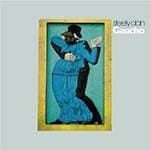■ Testing Simulated Effects on the Nautilus EP-1
This is Part V of our deep-dive series on the built-in effects of the Korg Nautilus workstation synthesizer, with a focus on electric piano sounds.
In the previous installment, we explored the effect features built into the Nautilus EP-1 engine, specifically those applied to Rhodes piano emulations.
The Nautilus astonishingly simulates the nuanced differences in effects across various eras of Rhodes pianos. One can’t help but admire the dedication and craftsmanship of the engineers who made this possible.
In this session as well, you can truly feel the spirit of classic gear through the carefully modeled built-in effects.
■ Essential Effects for Electric Piano
At a guitarist’s feet, you’ll often find an overwhelming number of effects pedals—so many that you might start to wonder, “What are all these even for?”
There are distortions, phasers, flangers, choruses, fuzzes, wah-wahs, compressors, digital delays, and more.
Some setups even include two different units of the same effect type, like multiple distortions or phasers. Add in a volume pedal or tuner, and it becomes quite bulky and heavy.
A guitarist’s love for effects may stem from an insatiable desire to shape and perfect their sound. Once you start diving into the world of effects, it quickly becomes a maze, or even a rabbit holethat's hard to escape.
My personal approach to effects has always been grounded in the belief that “the natural sound is the most important.”
Because of that, I usually only apply delay to synthesizers and reverb to organs—nothing more.
Back when I was a student and covering Todd Rundgren’s Utopia, flangers were all the rage. I remember Roger Powell, the band’s keyboardist, using a flanger on his synthesizer, and I tried to mimic that by running a BOSS flanger through my Roland SH-5. That was about as far as I went with effects.
Keyboard instruments are heavy enough on their own, so bringing along extra cables, a delay machine, and a flanger felt like too much hassle.
But the Rhodes piano was the exception.
That was because I was deeply influenced by Richard Tee’s sound.
Today, synthesizers come with built-in delays, phasers, flangers, and more. There’s no more signal degradation from external cables, and everything is so much more convenient. We really do live in a great time for sound creation.
■ The Legendary Effect Loved by Richard Tee – A Timeless Classic
Now, let’s walk through the effect configuration process for the EP-1 engine on the Korg Nautilus.
To begin, go to Screen 1, and from the Set List on the display, tap the Tine-type electric piano sound, labeled EP Mark I Early Amp under slot 5 (displayed as "EP").
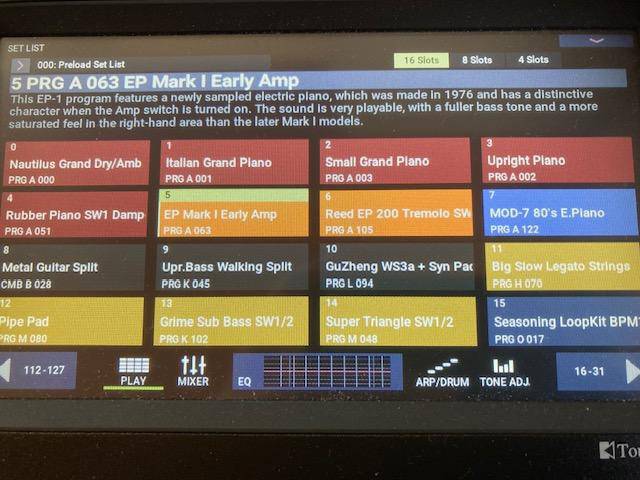
Screen 1: Nautilus display showing the selected Tine-type sound — EP Mark I Early Amp
Next, press the MODE button located at the top-left of the Quick Access Buttons (Screen 2). This is your starting point for navigating into deeper settings.
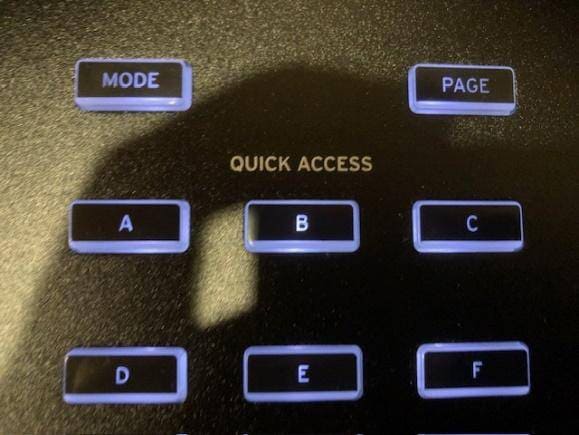
Screen 2: The MODE button is at the top-left of the quick access area
From Screen 3, the Mode Select screen, tap the PROGRAM button located at the top center to access the electric piano sound engine screen.
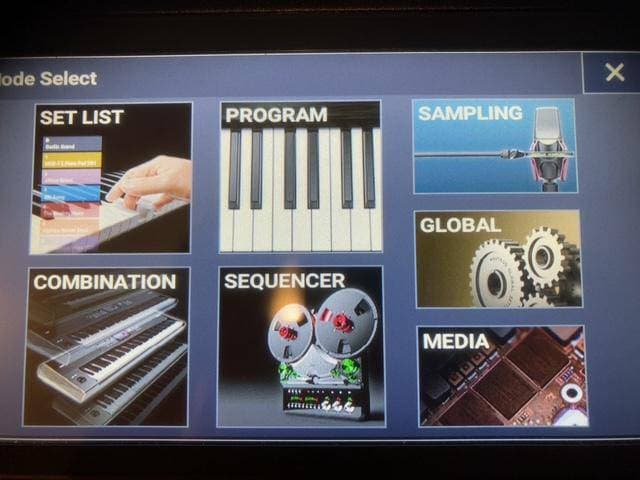
Screen 3: The Mode Select
■ Tine EP I Late Type (Rhodes Piano Sound) – Built-In Effect Setup
1. Tine EP I Late – Effects Screen
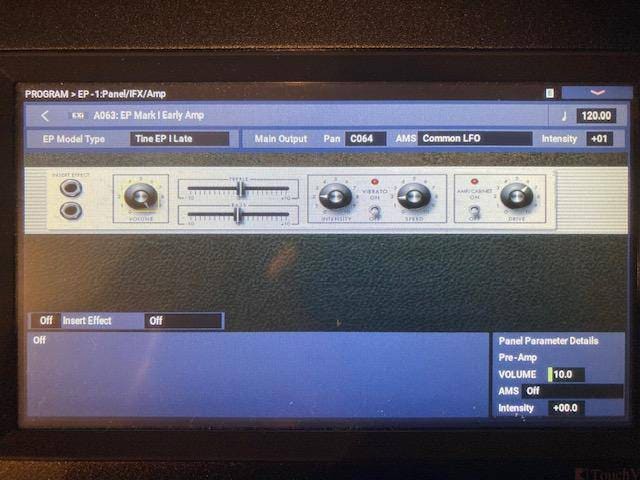
As in the previous session, this section describes how to configure the built-in effect routing in the Nautilus for the late-model Rhodes Mark I sound, which I once owned.
2. Tine EP I Late Type – Effect Input/Output Terminal Screen
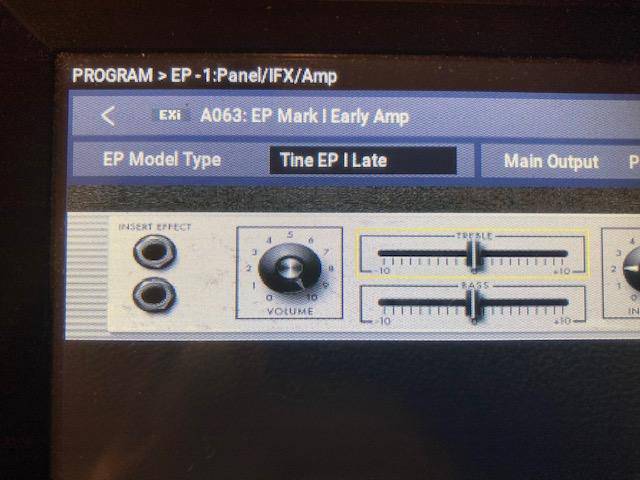
On the far left of the interface is the INSERT EFFECT terminal, used to apply effects:
IN (top)
OUT (bottom)
In a real Rhodes piano setup, you would connect the effect unit’s OUT to the IN jack on the Rhodes, and run the signal from the Rhodes’ OUT jack back into the IN of the effect unit.
When using the Nautilus’ built-in effects, you can simply tap on the INSERT EFFECT terminal on the touchscreen, and it will take you to the screen where you can select your desired effect.
3. Insert Effect Screen
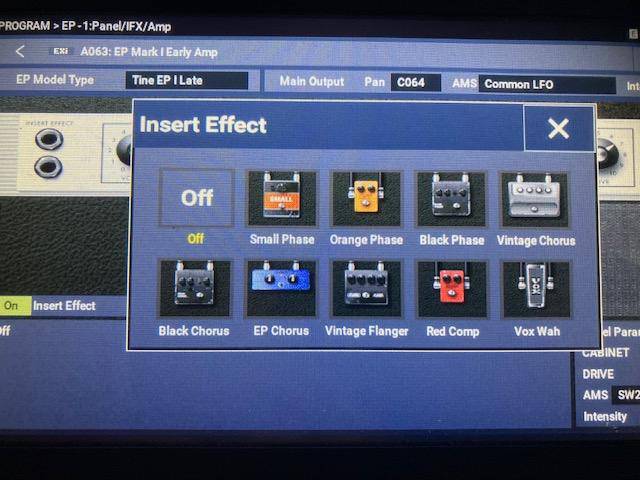
From this screen, you can select and use any of the built-in effects available on the Nautilus.
There are 9 types of effects:
- Small Phase
- Orange Phase
- Black Phase
- Vintage Chorus
- Black Chorus
- EP Chorus
- Vintage Flanger
- Red Comp (Compressor)
- Vox Wah
This includes three phasers, three choruses, one flanger, one compressor, and one wah pedal—a lineup that highlights the high usage frequency of phasers and choruses, especially with electric piano sounds.
The manual doesn’t mention brand names, but the visual design of each effect closely resembles the real-world pedals they’re modeled after, so it's easy to recognize what they're simulating.
To begin, tap the Small Phase icon, which is a phaser that has become synonymous with the classic Rhodes piano tone, to select and activate that effect.
4. Selected Small Phase Effect Screen
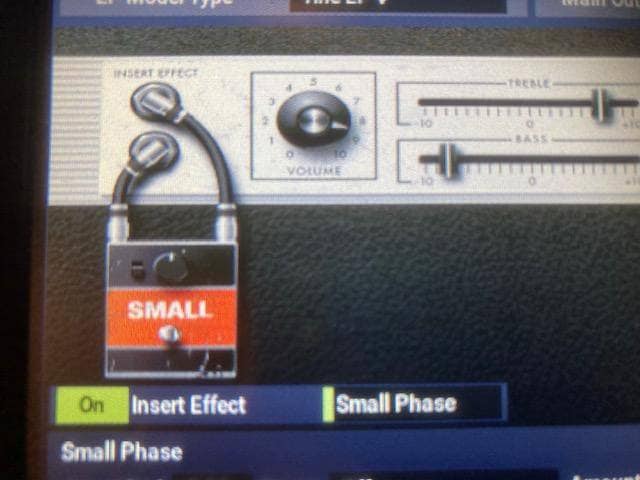
The effect icon labeled "SMALL" clearly references the Electro-Harmonix Small Stone, a favorite among Rhodes players like Richard Tee.
The original Small Stone came in a silver aluminum box with “SMALL STONE” printed on it. Released in 1974, the pedal has gone through several versions over the years. Today, it comes in a compact, rectangular gray enclosure, but the older versions were considerably larger and were about twice the size. And, like many Electro-Harmonix pedals, they had a bulky build. The older models also featured a sloped surface that were designed so the footswitch could be pressed more easily by players.
A humorous detail is the onscreen effect graphic on the Nautilus—it mimics the real-life pedal so closely that it even shows wear and scratches, as if it's been heavily used. It’s a small touch, but it makes me crack a smile!
5. Selected Small Phase Effect Screen
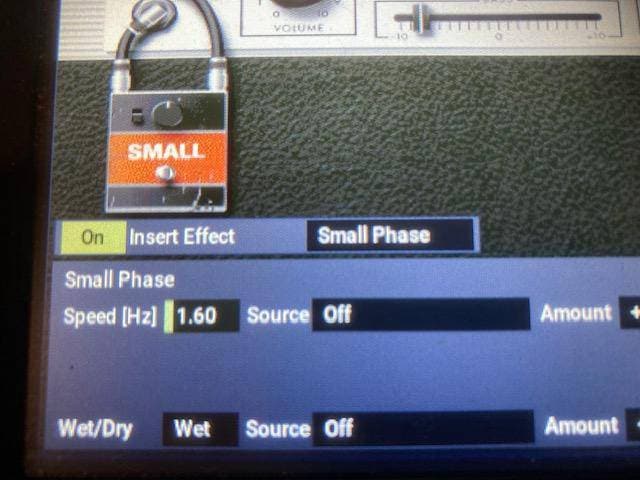
When this effect is activated, the lower portion of the effect icon lights up to indicate it's ON, and the effect name “Small Phase” appears to the right of the icon.
6. Nautilus Input Rotary Dial Knob
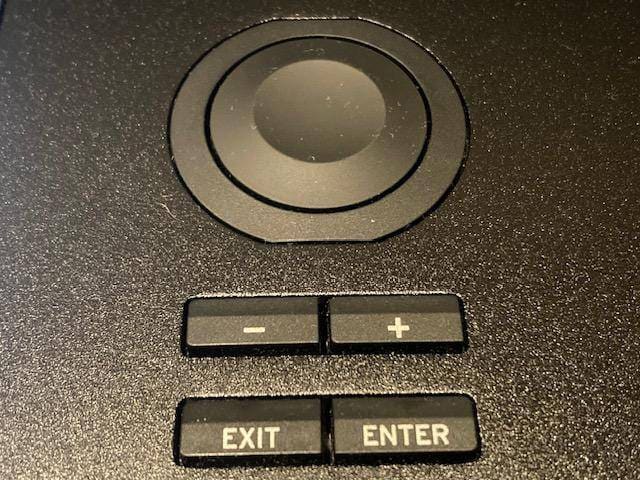
Phasers work by shifting the phase of the sound and they create a subtle, swirling movement. This swirling effect is controlled by setting the rate (or speed) of the modulation.
Once the Small Phase appears on both the right and bottom sections of the Insert Effect screen, tap the area below it to access the modulation adjustment screen.
You can then use the rotary dial knob on the right side of the Nautilus display to input the speed of the phase effect.
(See images 5 and 6 for reference.)
7. Small Phase Effect Screen
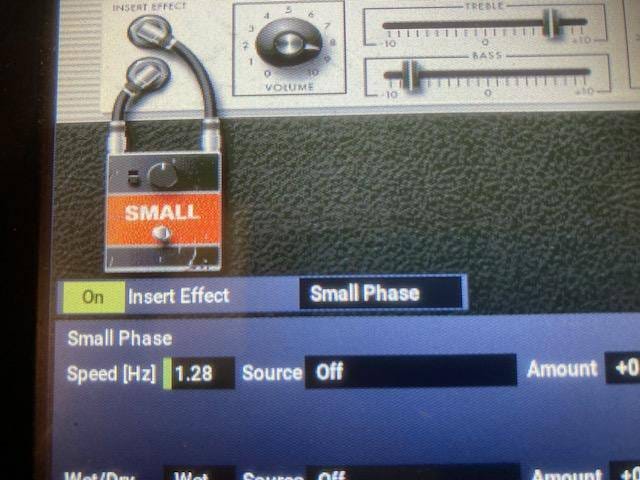
In my case, my preferred speed setting was around 1.28. The lush, swirling tone produced by this effect is truly the essence of the Small Stone.
You can hear this exact sound in the intro of Paul Simon’s “Still Crazy After All These Years”, where Richard Tee plays the Rhodes piano. This song won Album of the Year at the Grammys.
Another example is the intro to “America” from Simon & Garfunkel’s Central Park concert in New York. This live version may showcase the Small Stone’s unique character even more clearly.
When overused, a phaser can sound too extreme and overwhelming. But when applied just right, the subtle shimmer adds a delicate charm. It’s barely noticeable, but it’s sorely missed if removed. It’s that elusive touch that resonates deeply with so many musicians.
I have nothing but admiration for how accurately the Korg Nautilus captures the qualities of this legendary effect unit.
In the next installment, I’ll explore the remaining effects. Stay tuned!
The “sound & person” column is made up of contributions from you.
For details about contributing, click here.





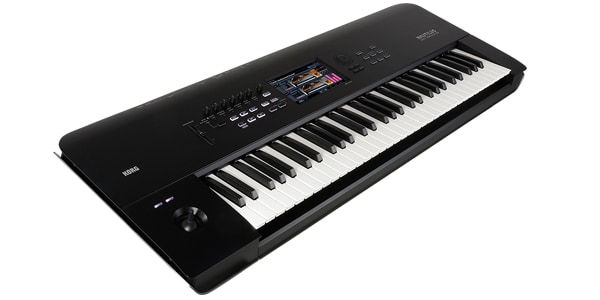

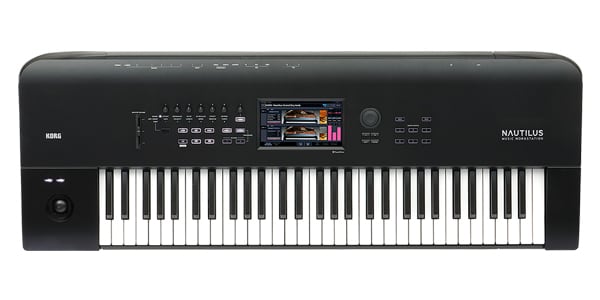


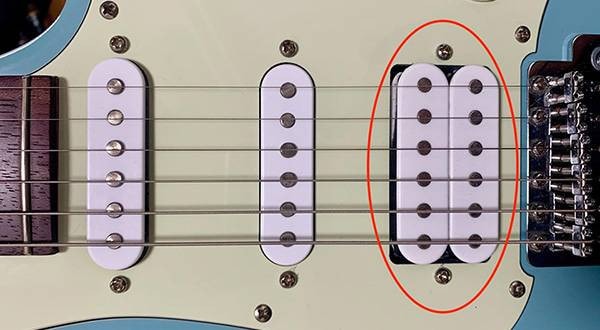



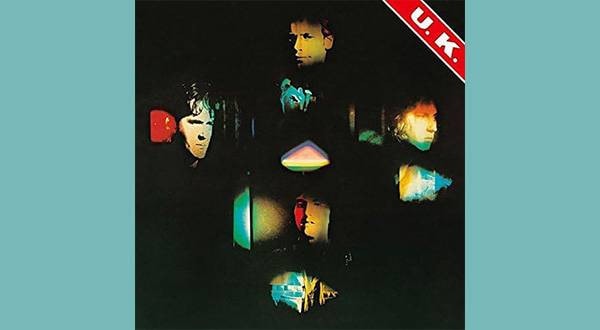
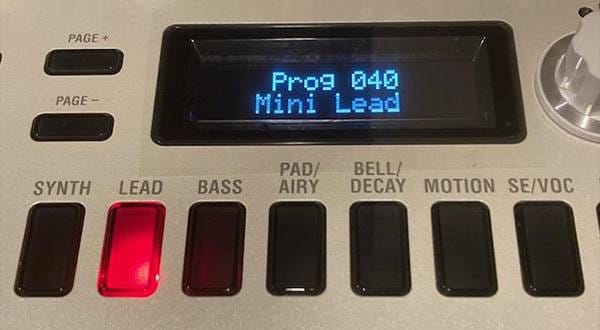

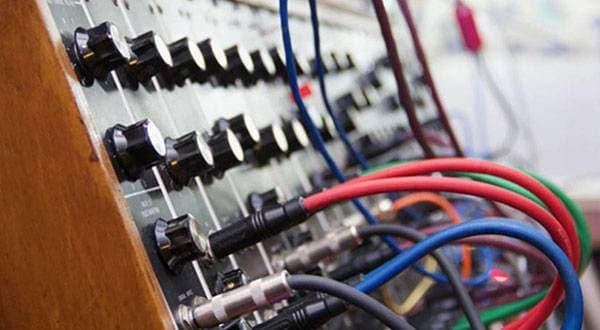

 エレクトリックピアノ 入門ガイド
エレクトリックピアノ 入門ガイド
 シンセサイザー 入門ガイド
シンセサイザー 入門ガイド
 USB接続対応のMIDIキーボード
USB接続対応のMIDIキーボード
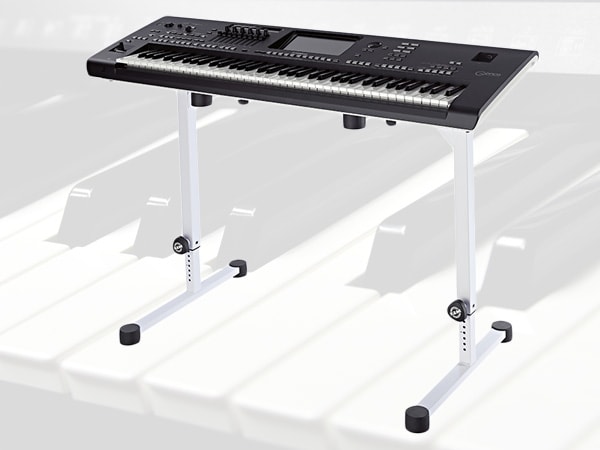 キーボードスタンドの選び方
キーボードスタンドの選び方
 エフェクター編
エフェクター編
 キーボードスタートガイド
キーボードスタートガイド


